



China’s extensive dam-building on the Brahmaputra exemplifies its “hydropower diplomacy,” leveraging water to assert regional dominance. This threatens India’s water security, risking floods, scarcity, and ecological damage. India must safeguard riparian rights and accelerate its own dam projects to counter China’s hydro-hegemony.
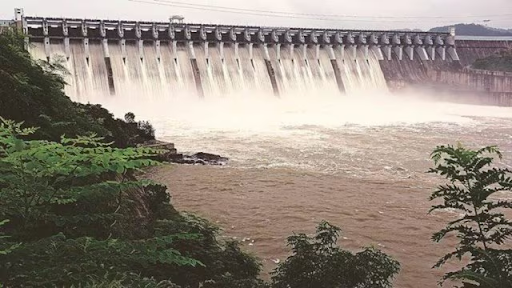
Copyright infringement not intended
Picture Courtesy: INDIAN EXPRESS
China’s mega-dam projects on the Yarlung Tsangpo exemplify its use of hydropower diplomacy, leveraging transboundary rivers as strategic tools to exert geopolitical influence over India.
|
Read all about: Brahmaputra Dams: India-China Tensions |
It is a foreign policy strategy where a country uses the development and control of water infrastructure (eg. dams) as a tool for foreign economic statecraft and regional influence.
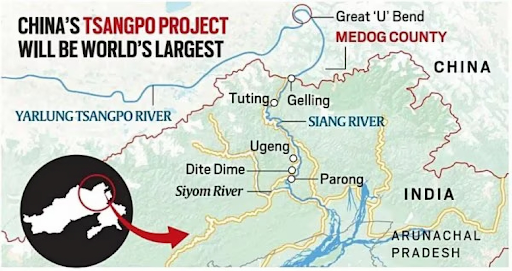
China employs this strategy to:
China’s aggressive dam-building program is driven by a combination of domestic needs and foreign policy ambitions.
Energy Security and Climate Goals: Hydropower is central to China’s goal of achieving carbon neutrality by 2060. In 2024, China added 14.4 GW of new hydropower capacity, which is more than half of the global total 24.6 GW.
Economic Development: Infrastructure projects stimulate economic growth, in less-developed regions like Tibet.
Asserting Sovereignty: By building infrastructure in contested territories along the Indian border, China strengthens its territorial claims.
Geopolitical Leverage
China’s upstream position on rivers like the Brahmaputra allows unilateral control over the water flow regime.
Alternative Multilateralism
By establishing the Lancang-Mekong Cooperation (LMC) in 2016, China created a platform to manage and legitimize its dams, and de-securitize water issues by folding them into an economic development agenda.
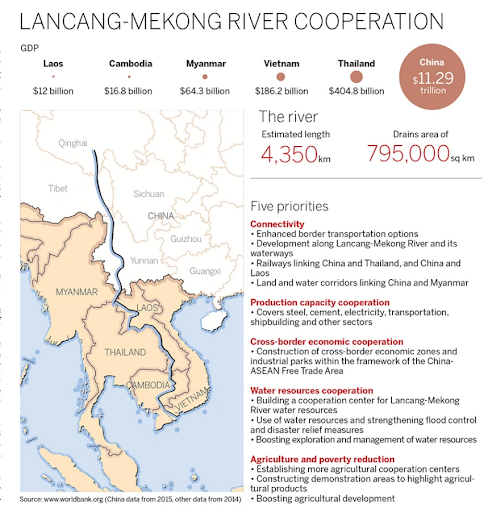
Exporting Technology and Capital
China's dam-building prowess is a major component of its Belt and Road Initiative (BRI). Its state-owned enterprises build and finance hydropower projects globally, exporting Chinese technology, labor, and capital.
Water Security Threat
Dam operations, dictated by China's electricity needs, may alter the river's seasonal flow. This risks reduced water flow during dry seasons and sudden, intentional releases during monsoons, threatening agriculture in Assam and Arunachal Pradesh.
The "Water Bomb" Risk
In a conflict scenario, China could use its dams as a "water weapon," releasing massive amounts of water to cause flooding downstream.
Transparency and Trust Deficit
China provides few details on dams. This secrecy prevents India from evaluating risks and preparing for scenarios, hindering Confidence-Building Measures (CBMs).
Ecological Damage
Dam construction will alter the river's natural flow, blocking the nutrient-rich sediment vital for agriculture in Assam's floodplains. It also threatens the fragile Himalayan ecology and its rich biodiversity.
Geological Risks
The project is located in a high-risk seismic zone (Seismic Zone V). A major earthquake could lead to a dam breach, leading to a catastrophic disaster downstream.
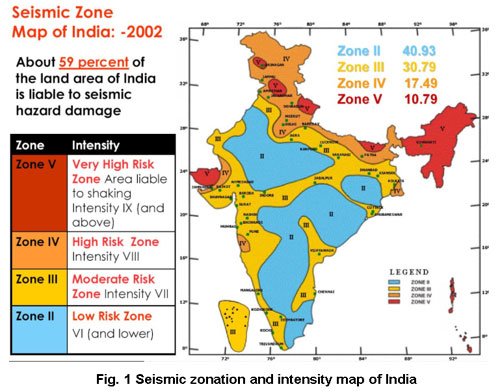
International Law
The 1997 UN Convention on the Law of the Non-Navigational Uses of International Watercourses establishes principles like "equitable and reasonable utilization" and the obligation not to cause "significant harm" to other states. However, its effectiveness is limited as key upstream nations, including China and India, have not ratified it.
Regional Treaties
In South Asia, treaties like the Indus Waters Treaty (1960) and the Ganges Water Treaty (1996) provide frameworks for cooperation. However, there is no similar comprehensive agreement between India and China.
Deepen Cooperative Frameworks
Institutionalize Dialogue: India must push for establishing formal, permanent water-sharing protocols with China, expanding the existing dialogue mechanisms to ensure transparency and consistent real-time data exchange.
Regional Bloc: Strengthen trans-boundary river cooperation with Bhutan and Bangladesh through joint flood modeling and shared warning systems to create collective diplomatic weight.
Enhance Domestic Preparedness and Resilience
Advanced Monitoring: Invest in satellite-based remote sensing and real-time hydrological monitoring to assess water flow, sediment, and environmental impacts independently.
Strategic Infrastructure: Prioritize and complete strategic domestic projects like the proposed Upper Siang Project (11.5 GW) and invest in reservoirs on Indian tributaries.
Diversify Water Sources: Reduce reliance on trans-boundary rivers by investing in rainwater harvesting, desalination, and underground water storage.
China’s hydropower strategy poses risks to India’s water, food, and national security. India must respond proactively—strengthening domestic capacity, building regional alliances, and engaging China strategically to ensure sustainable, secure river basin management.
Source: INDIAN EXPRESS
|
PRACTICE QUESTION Q. Critically analyze the strategic implications of China's dam-building activities on the Brahmaputra River for India's water security and regional stability. (250 words) |
China is leveraging its upstream position on trans-boundary rivers to build dams, using water as a tool of foreign policy to gain strategic influence over downstream neighbors.
India's primary concerns are water scarcity, flash floods, ecological damage, and the potential for China to use water as a weapon during conflicts.
This refers to the fear that China could intentionally release large volumes of water from its dams, causing catastrophic floods in downstream India.


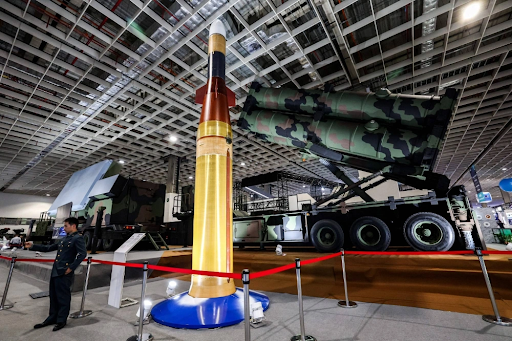
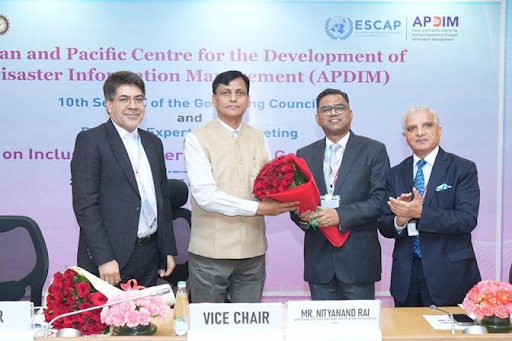



© 2025 iasgyan. All right reserved